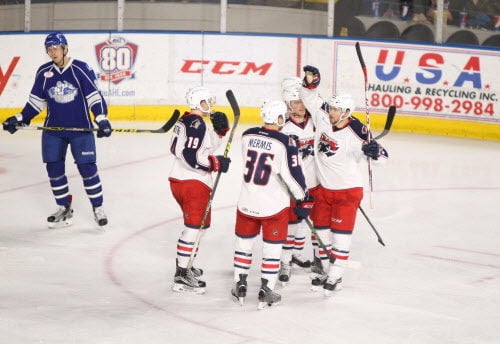American cities are constantly giving up too much in arena and stadium deals for pro sports teams.
We need only look up I-10 to see how ugly things get. Glendale, as you may know, gambled its future on professional sports back in the early 2000s, and its first big deal was building an arena for the Phoenix Coyotes hockey team.
The city put $180 million toward the arena, with the team pitching in $40 million of its own, and gave it a deal so rich for the team and bad for taxpayers that the city was paying the Coyotes millions per year to manage the arena that city taxpayers had built. It was a real lose-lose, to twist the saying around.
Glendale finally found a way to bail out last year. The Coyotes still haven’t figured out where in the Phoenix area they’ll settle.
So now Tucson is dealing with the same sports franchise, one that is used to rich deals with municipalities and is consorting with Phoenix now, hoping to cut a new deal for a home arena. Could we actually do better than those big cities to the north?
Actually, yes, we can as the City Council approved the deal Tuesday night. At first blush, it looks like Tucson is benefiting from a couple of key differences from the positions that cities like Glendale found themselves in when they cut their deals — or that Phoenix finds itself in now.
A simple one is scale: Cutting a deal for a minor-league hockey team to play in an existing arena is less expensive than building a new arena for a big-league team. The Rio Nuevo district is putting $3.2 million toward improvements at the TCC arena to accommodate the team, a relative pittance in the world of pro sports.
The other difference is municipal desperation. Those cities were desperate to attract or keep a team, which they saw as key to their identities or their futures. Tucson looks at the Coyotes’ American Hockey League team, and our level of interest is slightly higher than indifferent. In this case, the Coyotes seem to be the party who really wants the deal.
That allowed City Manager Mike Ortega to take an unusual approach to negotiations. He started with a number that he wants the city to make off the deal — about $500,000 per year. From that endpoint, he and City Attorney Mike Rankin and others worked backward, negotiating terms that largely protect Tucson taxpayers from being caught subsidizing a bad deal.
In a brief conversation at the City Council meeting Tuesday, the Coyotes’ general counsel, Ahron Cohen, called the Coyotes’ guarantees “unprecedented.”
He was referring to those $3.2 million in improvements. The reason: The Coyotes have guaranteed that the Rio Nuevo district will get paid back for them. The district will impose a $2 surcharge on every ticket, $1 of which will go back to the district’s general fund. If the Coyotes leave early, with money still to be paid on those improvements, the Coyotes will pay back the remainder.
Council member Steve Kozachik, who is a sports-event manager in his day job at the UA, raised questions about several aspects of the deal, including how the city will pay for repairs if major components at the TCC arena break down.
“If at the end of the fiscal year, we have a combination of operations and capital expenses staring at us, we ought to have an option within the contract to tell the Coyotes, ‘This isn’t working for us,’” he told me before Tuesday’s meeting.
It’s true the deal does not have a firm “stop-loss” provision for Tucson, but the major components at the arena are pretty well covered. The arena’s electronic signs, sound system, new seating and lighting all were part of a recent renovation, and are warrantied through February 2017.
Rio Nuevo has committed to fronting the money for any repairs that cost more than the money accumulated, to be paid back through future ticket surcharges.
Neil deMause, co-author of a book on stadium deals called “Field of Schemes,” told me Tuesday, “On the surface, this doesn’t look like a terrible deal.”
His big concern was capital costs and operating costs. But, as with the capital costs, there is a source of money to pay for increased operating costs at the arena, too, and the increased cost is projected only at $356,000. The city gets $300,000 per year in what amounts to rent, plus a 50 percent cut of concessions, parking fees, indoor advertising and naming rights. The city is projecting between $600,000 and $1 million a year in new revenue, which would more than offset additional costs.
So, I can hardly believe it, but the franchise that cut what deMause called “one of the worst” arena/stadium deals in America up in Glendale, gave up enough in this deal to make it look pretty good for Tucson.
Council member Paul Cunningham, the biggest supporter of sports on the council, said, “This is about as low-risk a deal as you can get when it gets to sports commerce. This is a very mutually beneficial agreement.”
If it blows up, we should be OK. Then there’s that whole other possibility, the one we barely dare to consider: What if the hockey team actually does well here and catches on with the public? I don’t think in Tucson we have a contingency plan for success.






